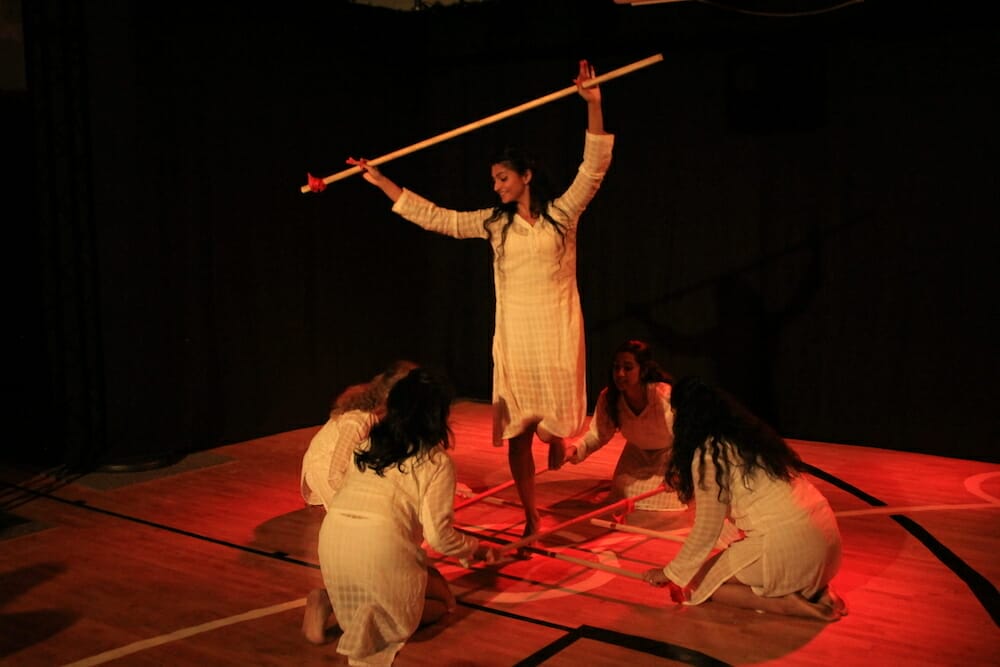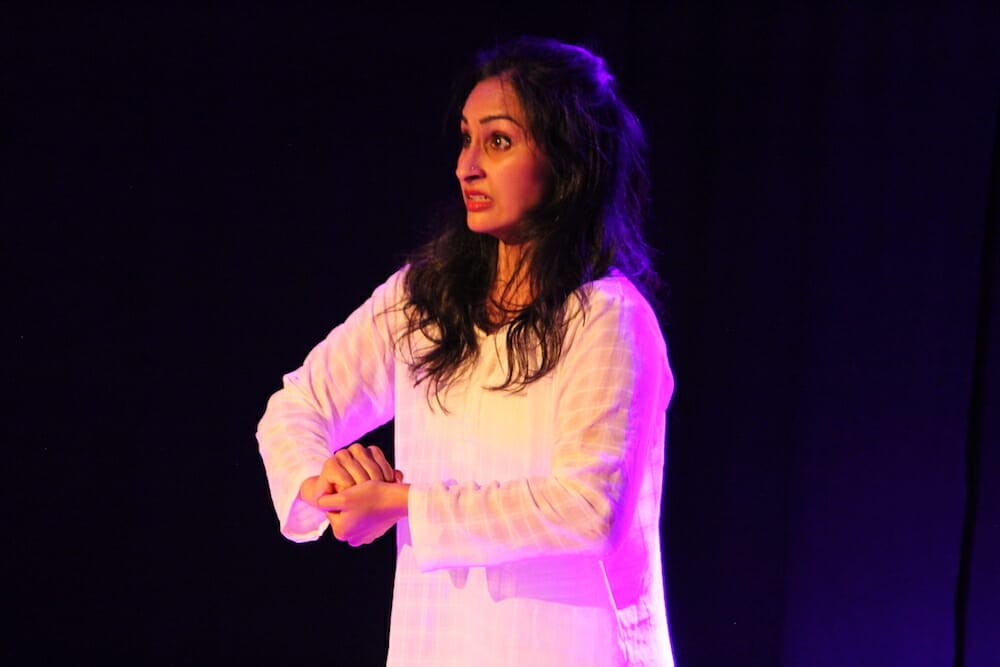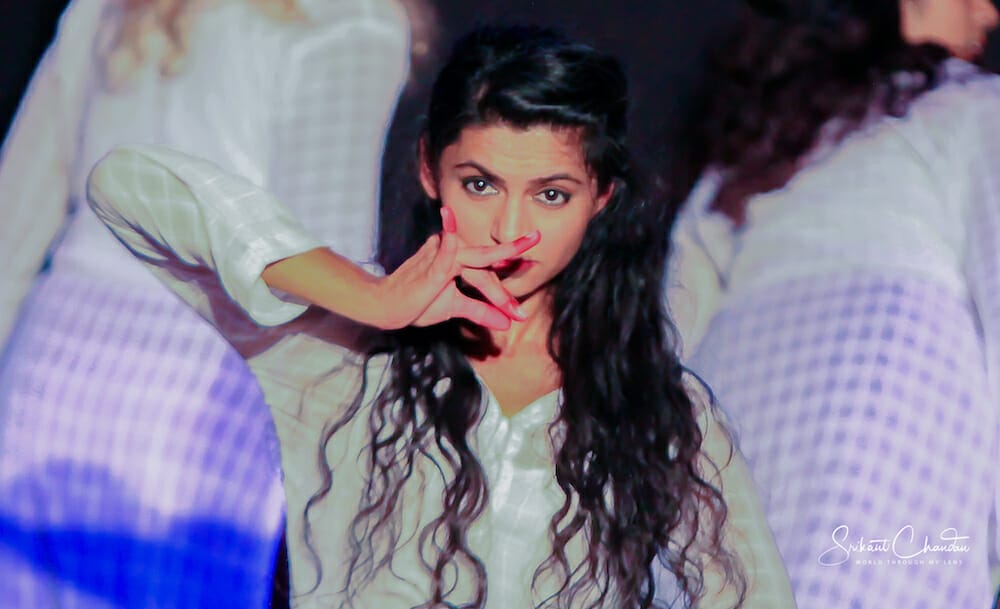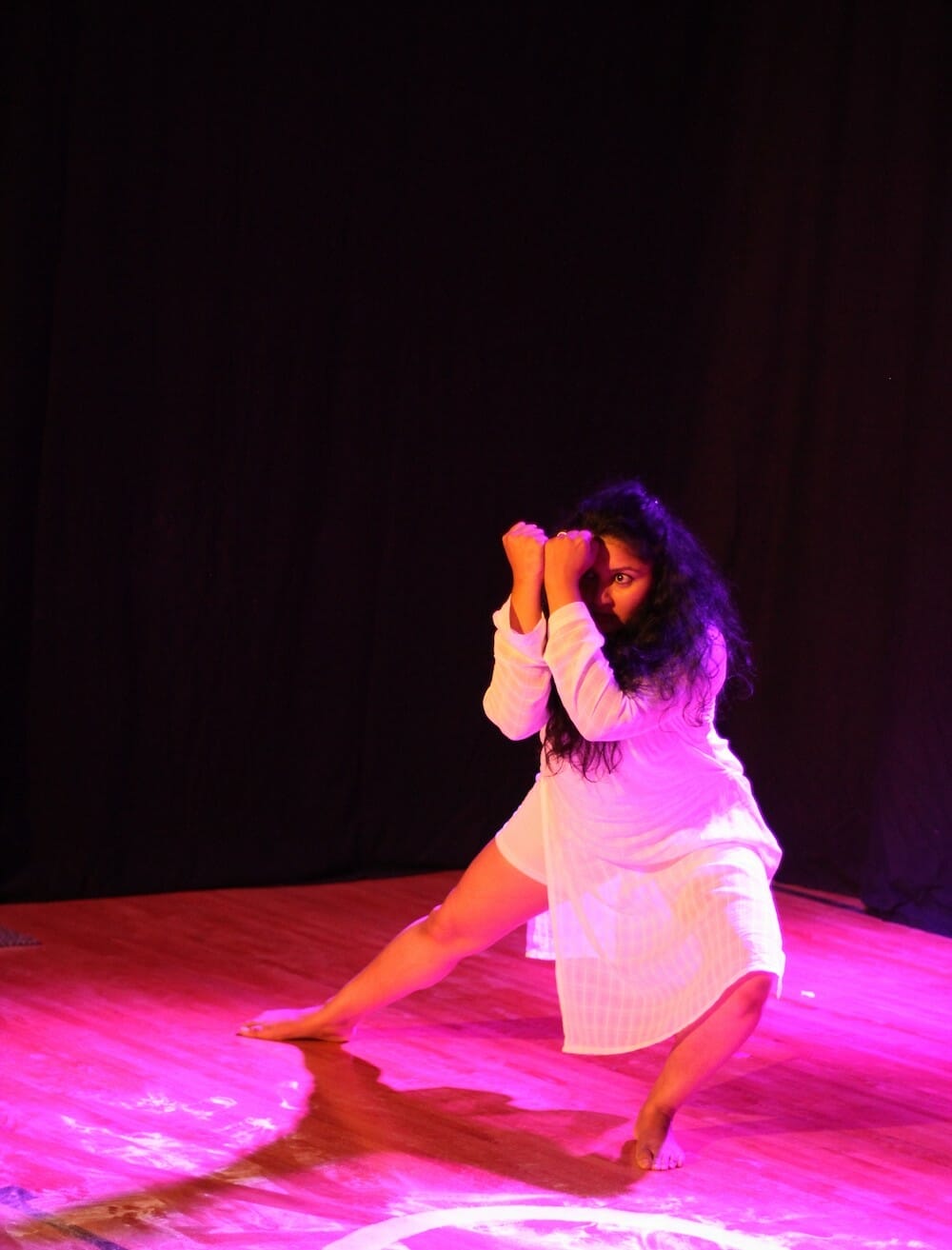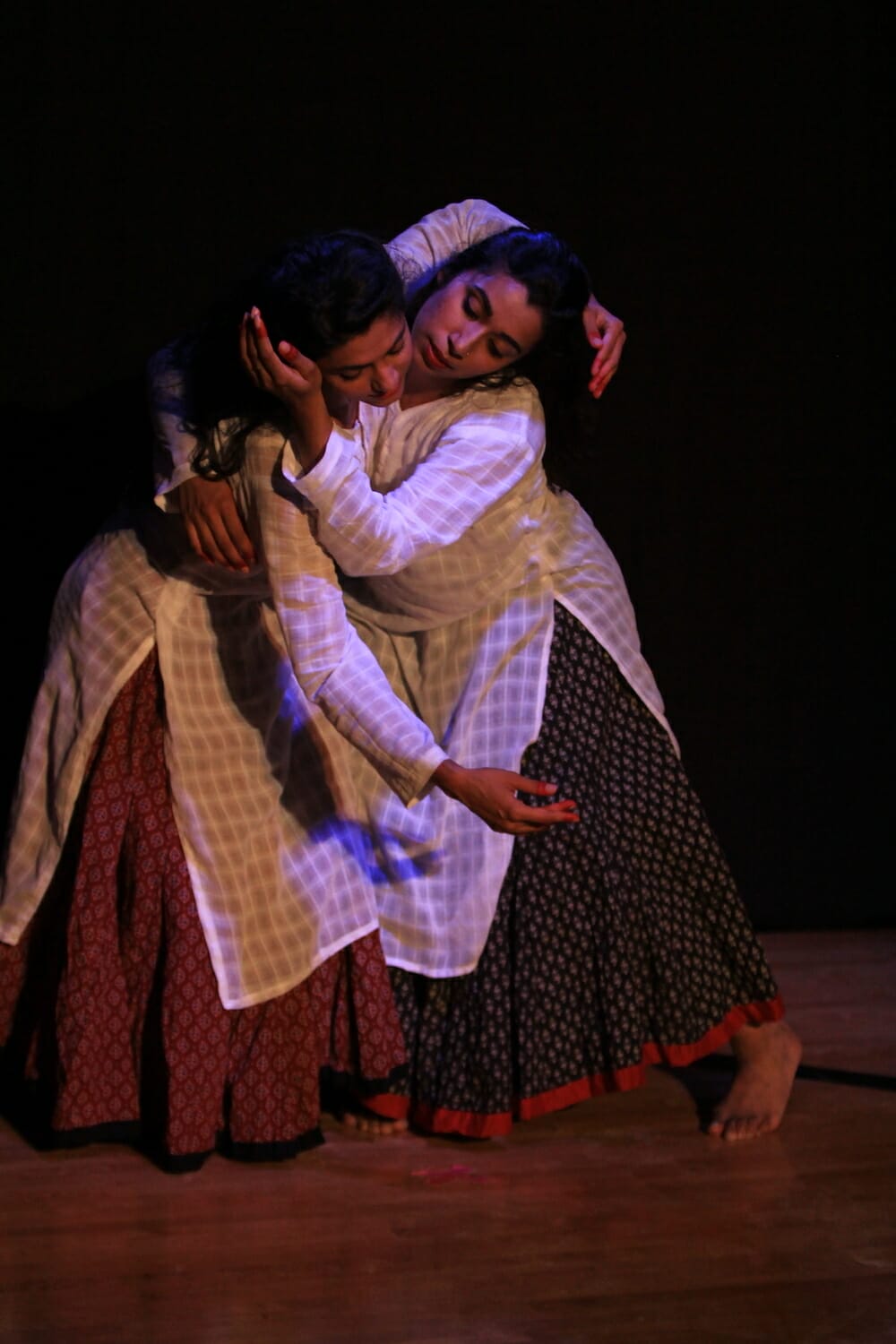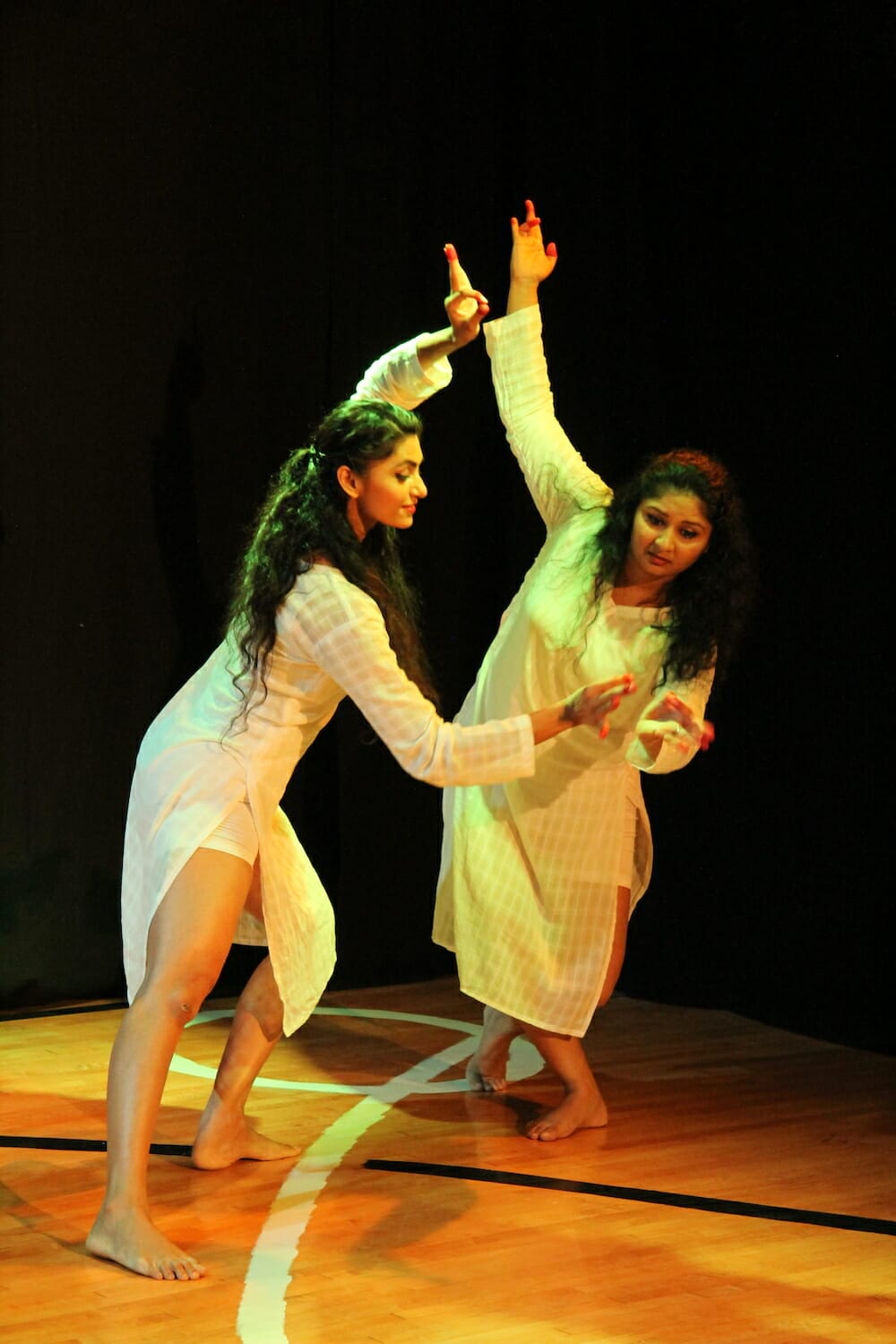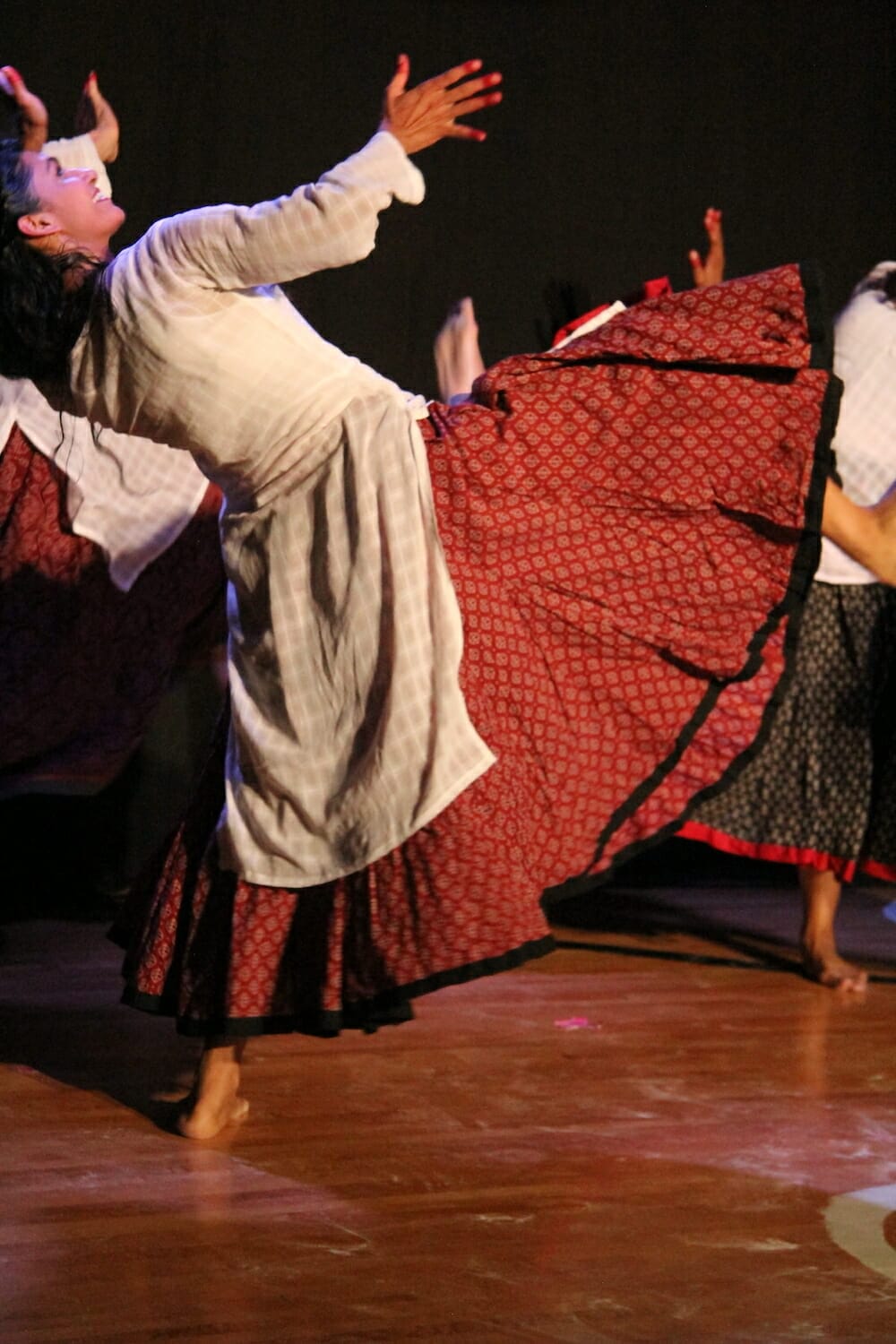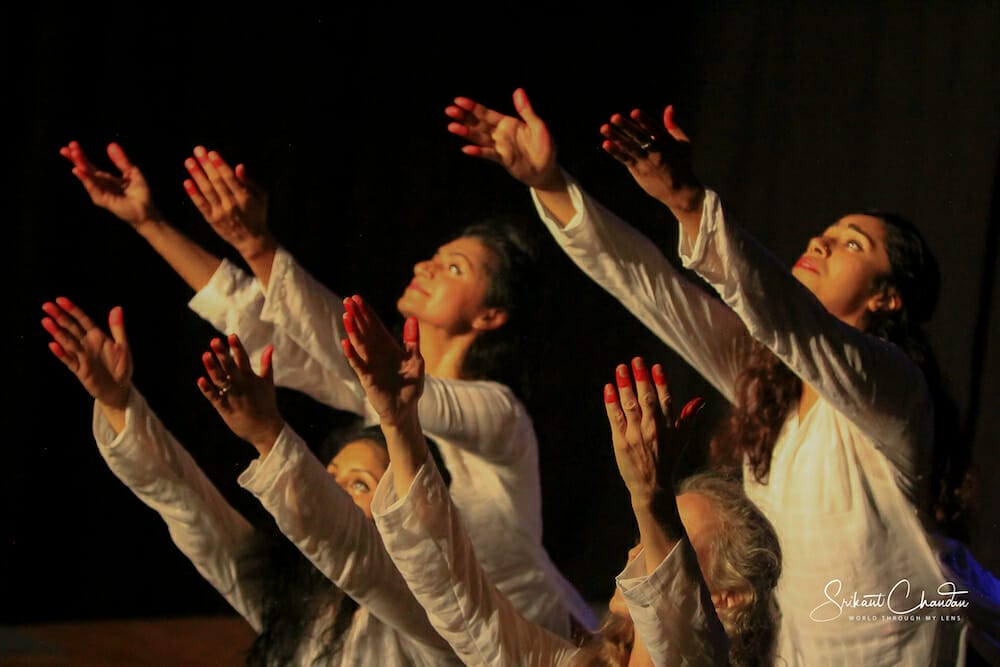When:
September 28 7:30 PM
September 29 3:30 PM
September 29 7:30 PM
Where:
Indian Boundary Park
2500 West Lunt Avenue
Chicago, IL 60645
Indian Boundary Park
2500 West Lunt Avenue
Chicago, IL 60645
Editor’s PICK! -- See Ishti Dance Explore How we Arrived At this Troubled Place… in Praktiki
Read this interview below with Ishti’s co-principals—Kinnari Vora and Preeti Veerlapati
(PTP) What was the original inspiration for Prakriti? How did the germ of the idea for this dance come about?
(Ishti) After the 2016 election, we witnessed just how divided the country had become. People could no longer communicate with each other without letting their emotions take over. To the point that friends and family members would no longer talk to each other. Kinnari’s good friend and his twin sister stopped talking to each other because of this and that was the moment of realization for wanting to create a production.
How has the idea for Prakriti evolved since this inception?
We began with trying to understand how our ancestors might have reacted to anything “different” or unknown. In the initial stages of the research process, we looked to Maslow’s Hierarchy of Needs - maybe we are worried about not having enough resources that we react defensively. However, it didn’t quite answer all of the reasons we react the way we do. We both also read the book Sapiens by Yuval Noah Harari which provided several theories that we were able to build upon. Through this process, we decided to focus on the fear of the unknown and how we react to fear - fright, flight or fight. And thus, Prakriti was born.
How did each of the ten dancers who perform in Prakriti come to take part in it? Do they have a role in shaping the performance? How does that work?
We are very lucky to have all the dancers and they all brought their unique and diverse backgrounds to the table as this production came to fruition.
- Anu Bhatt was introduced to us through a project in 2013 and the three have been dancing together ever since. In fact, she was seminal to the formation of Ishti. With her background in theater, she acts as our voice coach and has indispensable input in stage presence.
- Tuli Bera was a core dancer in our first production seeking to be in 2016 and has been dancing with us since. Tuli’s experience and training in ballet and modern dance brings a different movement style and perspective to the table. Her mind boggling questions about the intent of the movements and storyline keep us thinking through all the components.
- Yarina Liston had attended our brunch and learn folk dance workshop and responded to our audition call for Prakriti Work in Progress.
- Krithika Varsha and Preeti danced together at another local Indian dance company in 2015 and she joined Ishti last summer.
Anu, Tuli, Yarina and Krithika were a part of the work in progress showing last year at the Chicago Fringe Festival which was reviewed by Picture This Post.
- Viktoria Mytling has been collaborating on Romani dances with Kinnari since 2013. After this summer’s Night Out in the Parks project on the Indo-Ruska Romani Dance Journey, she decided to be a part of this project.
- Susanna Hostetter had also attended our brunch and learn free workshops and responded to the audition call for Prakriti. She is our metronome!
- Pooja Jain was high school dance friends with Kinnari in India. Luck brought her to Chicago this year and she joined us this summer.
- With Pooja, came another gift; her 4 year old daughter Nishika Jain. Nishika came to one of our park rehearsals and learnt a folk dance step just by observing. Another rehearsal, she learnt the complicated “solkattus” (vocalization of percussive syllabus in South Indian music), again while eating her snack and observing. We couldn’t help but get her involved in the project.
How will video be used in this performance? How did this idea come about? What do you hope to get by making an abstraction of dance more “literal” with an interview format.
As a part of our research last summer, we had held a public discussion, emailed a set of questions and interviewed friends, colleagues, and strangers to get diverse views. The interview answers also helped shape our choreography.
This time, we wanted to bring those interview answers up front in the production. Responses we believe that are applicable and relatable to everyone. We have all been there and are there currently. Our video collaborator Shawn Convey is working his magic to bring the voices of our community up front and center.
Additionally, Indian classical dance uses mudras (hand gestures) and facial expressions to tell stories. We hope that with the combination of the video installation and the mudras that audiences will be better able to understand those specific movements when they see it again in the dance
Please tell our readers also how you collaborate with the composer/musicians?
This was the first time that we got to work with a music composer to create original music composed for the show. It was interesting as we had always only worked with Indian musicians (not necessarily of Indian nationality/ origin but musicians who specialized in Indian classical and folk music). This time we decided to work with a multi-instrumentalist, Bob Garrett, who has dabbled into various world music instruments. We shared the concept with the musician. He made us create a storyboard with detailed moments, emotions, time cues and frame. And there it was! Within a couple weeks, we had the first draft. Meanwhile, Kinnari’s guru Sarmishtha Sarkar from India was visiting, bringing her show Durdhara: The Unstoppable One to Chicago. Bob recorded Sarmishtha didi reciting a few solkattus and used it in the most complex way, altering the octaves and tempo. The electronic influence was definitely new for us to dance on and forced us to think and move out of our box.
We will have live music for a particular section of the production. That scene takes you to a village in India: people gather under a tree, someone brings their drums and everyone begins dancing - the joy of social dance.
Is Prakriti similar to other dances that you have choreographed? What is the “new” aspect of it?
The abstract nature of the subject and the in-depth research and thought put in for each movement, each moment and the intensity of emotions without a physical story was new for us. Besides,
- Use of several different genres of dance and music
- Use of Solkattus (Vocalization of percussive syllabus in South Indian music)
- Choreographing theatrical components
- Chanting a shloka (verse from ancient Vedic meter in Sanskrit)
- Wearing non-traditional costumes
- Conceptualizing the dance first with the music composed after that based on the dance framework
One of the more interesting components is that the dancers will bring 7 different spoken languages into this production
Please tell our readers—and please assume they are not steeped in either dance techniques in general or classical Indian dance- about the various dance techniques that you integrate in Prakriti?
- Bharatanatyam: A traditional classical dance form of South India. It involves nritta - pure dance and natya - expression of emotions.
- Kalaripayattu: South Indian martial arts
- Folk dances of India:
- Cheraw (also known as the bamboo dance): Folk/ritual dance from Mizoram, North-east India. It is performed with bamboo staves that are clapped together on a particular beat in horizontal and criss cross pattern and dancers jump through them.
- Sambhalpuri: Tribal dance from Orissa
- Raas Garba: Folk dance from Gujarat, western part of India performed with short sticks
What do you hope audience members take away from this performance?
We believe that it will be an all immersive experience, opening a lot of portals: sensory, emotional, cerebral. It’s an exploration. However, the take away message is left to the audience. It may be a life changing for some, it may be an evening of pleasing visual aesthetics, unique music and atmosphere for some. We do not intend to impose our ideas on anyone. We will be definitely sharing what has worked for some people and us. But there is no right or wrong. Each of our performances end with a talk back and a chance to share the process, ideas, etc.
How is dance—as opposed to other artistic media/modes—best suited to the aim of Prakriti?
We are not sure if dance is the best suited form for this concept but it is what we are best at! It is how we can express the best. In times when dance seems so distant from the mainstream audience and lifestyle, when the audience connectivity and number of dance performances attended are decreasing, when production costs are steeping high but the ticket price for dance is still what it used to be 10 years ago, we hope that we can bring the everyday relatable aspects and raw emotions to our audience
Any other comments? Please tell our readers any/all things you want them to know about this performance to help them decide if this is a good match with their interests…
It is an immersive experience. There is no podium, no curtain, no proscenium staging, no us vs you. We are all in for the same reason. Our performers vary from 4 years to 46 years, our hair from blonde to dark brown, our languages from Telugu (South Indian) to Russian to French. Our performance experience varies from the very 1st dance production to playing for the Hamilton. So we are sure that there is something in it for every body. Dance, music, costumes, the historic Indian Boundary Park fieldhouse. Don’t think you can get any better experience for $20.
To learn more—
Visit filmmaker Shawn Conveys website
Visit composer and musician Bob Garret website.
Read the Picture this Post review of an earlier iteration of Prakriti here.
Photos courtesy of Prakriti

